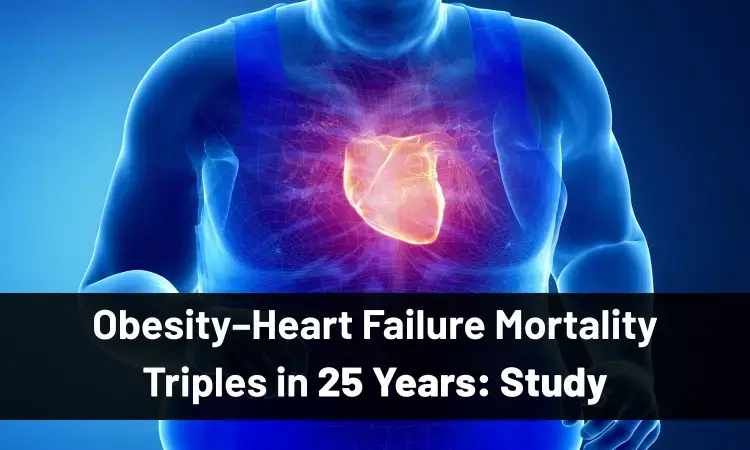- Home
- Medical news & Guidelines
- Anesthesiology
- Cardiology and CTVS
- Critical Care
- Dentistry
- Dermatology
- Diabetes and Endocrinology
- ENT
- Gastroenterology
- Medicine
- Nephrology
- Neurology
- Obstretics-Gynaecology
- Oncology
- Ophthalmology
- Orthopaedics
- Pediatrics-Neonatology
- Psychiatry
- Pulmonology
- Radiology
- Surgery
- Urology
- Laboratory Medicine
- Diet
- Nursing
- Paramedical
- Physiotherapy
- Health news
- Fact Check
- Bone Health Fact Check
- Brain Health Fact Check
- Cancer Related Fact Check
- Child Care Fact Check
- Dental and oral health fact check
- Diabetes and metabolic health fact check
- Diet and Nutrition Fact Check
- Eye and ENT Care Fact Check
- Fitness fact check
- Gut health fact check
- Heart health fact check
- Kidney health fact check
- Medical education fact check
- Men's health fact check
- Respiratory fact check
- Skin and hair care fact check
- Vaccine and Immunization fact check
- Women's health fact check
- AYUSH
- State News
- Andaman and Nicobar Islands
- Andhra Pradesh
- Arunachal Pradesh
- Assam
- Bihar
- Chandigarh
- Chattisgarh
- Dadra and Nagar Haveli
- Daman and Diu
- Delhi
- Goa
- Gujarat
- Haryana
- Himachal Pradesh
- Jammu & Kashmir
- Jharkhand
- Karnataka
- Kerala
- Ladakh
- Lakshadweep
- Madhya Pradesh
- Maharashtra
- Manipur
- Meghalaya
- Mizoram
- Nagaland
- Odisha
- Puducherry
- Punjab
- Rajasthan
- Sikkim
- Tamil Nadu
- Telangana
- Tripura
- Uttar Pradesh
- Uttrakhand
- West Bengal
- Medical Education
- Industry
Obesity - Heart Failure Mortality Trends Escalate: Findings from 25 Years of Data, Published in JACC Advances

Mortality related to both obesity and heart failure (HF) has more than tripled, according to a new analysis published in JACC Advances.
Although a modest decline followed the pandemic peak, rates remain substantially elevated compared with pre-pandemic levels, underscoring an ongoing public health challenge.
Obesity and HF continue to rise in parallel, reflecting the nation’s expanding cardiometabolic burden. Obesity contributes to metabolic and inflammatory pathways that accelerate HF risk, while HF already affects millions and is projected to increase further as the population ages. By 2030, 20% of Americans will be older than 65 (57% projected to have HF). Despite this growing overlap, national-level trends describing combined obesity–HF mortality had not been comprehensively evaluated until this study.
Researchers analyzed nationwide mortality data from the CDC WONDER database from January 1999 through December 2024. Adults aged > 25 years with both obesity and HF, listed on death certificates were included. Crude and age-adjusted mortality rates were calculated, and temporal trends were assessed using joinpoint regression to measure annual percent changes. Subgroup analyses evaluated differences by sex, age, race/ethnicity, geographic region, and urbanization. Locations of death and leading underlying causes were also examined.
A total of 161,870 deaths were identified over the 25-year period. Age-adjusted mortality rose (AAMR)from 1.2 in 1999 to 3.3 by 2019 (average annual increase 5.7%), then sharply increased during the COVID-19 years, reaching 5.6 in 2021. During the pandemic years (2020-2021), the AAMR sharply increased from 4.7 in 2020 to 5.6 in 2021, with an average annual percentage change of 23.4%.
Post pandemic, rates decreased to 4.5 in 2024 (average annual decline −7.5%). Men consistently had higher mortality than women (5.0 vs 4.0 in 2024). Adults 65 years and older had the greatest burden (13.2 in 2024), while those aged 25–44 years experienced a tripling of mortality since 1999 (from 0.3 to 0.9). Heart disease was the leading underlying cause of death among individuals with both conditions.
These findings highlight notable disparities in combined obesity–HF mortality across demographic and geographic groups. The rise among younger and middle-aged adults is particularly concerning and suggests earlier onset of obesity-driven cardiometabolic disease. Higher mortality in rural regions and certain census areas reflects limitations in access to preventive care, specialty services, and community-level health resources. Persistent differences across sex and race point to complex biological, social, and structural contributors.
The authors emphasize that reducing mortality will require strengthening HF care delivery, improving access to effective weight-management strategies, and addressing broader social determinants that affect risk, diagnosis, and long-term management. Integrated, equity-focused approaches at both clinical and community levels will be essential to shift the trajectory of this dual epidemic across populations.
Reference: Sajid M, Qureshi S, Imran Z, Khan TM, Ali D, Waqas SA, Ahmed R, Fonarow GC. Rising Trends in Obesity and Heart Failure: Related Mortality in the United States, 1999-2024. JACC Adv. 2025 Oct 30;4(12 Pt 2):102303. doi: 10.1016/j.jacadv.2025.102303. Epub ahead of print. PMID: 41172630.
Dr Prem Aggarwal, (MD Medicine, DNB Medicine, DNB Cardiology) is a Cardiologist by profession and also the Co-founder and Chairman of Medical Dialogues. He focuses on news and perspectives about cardiology, and medicine related developments at Medical Dialogues. He can be reached out at drprem@medicaldialogues.in


